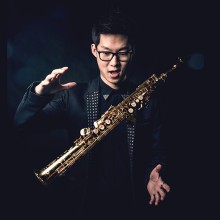Investigating Acoustic Instruments in the University of Alberta Physics Collection
This blog offers an introduction to three acoustic instruments I studied in the University of Alberta’s (U of A) physics collection, as part of my Fellowship in Sound & Science at Ingenium. The goal of my Fellowship was to investigate previously undocumented artifacts in the U of A Physics collection, and generate sufficient information for them to be added to an international database called Sound & Science. This database is being developed by researchers in Berlin, New York, and Ottawa to make it easier for researchers to locate acoustic objects in collections around the world, and to make connections between related historic objects. The instruments described below would have, at one time in their history, been used for acoustical research. Their primary purpose at the U of A was most likely educational, serving to demonstrate acoustic phenomena for students in the Physics Department.

Cherry Bowl Resonance Demonstrator, ca. 1900.
The first instrument I’d like to describe is this “Cherry Bowl” resonance demonstrator, circa 1900. The Cherry Bowl Resonator is a variation of Savart’s resonance bell. In that instrument, a bell is sounded and a resonator is moved back and forth to resonate with specific frequencies. In this one, a cherry bowl is filled with various levels of water. When a violin bow or a wet hand is moved across the lip of the glass bowl, standing waves are created in the water. An operator then moves the cylindrical resonator (on the right side) toward the bowl until it picks up the resonant frequency. This causes the cylinder to vibrate, or resonate, with the frequency and the operator is able to perceive the vibration as amplified, audible sound. This allows the user to demonstrate how different water levels create different frequencies, as well as how different standing wave patterns are produced, depending on the frequency generated.

Cagniard Siren, ca. 1900.
This second instrument, called a Cagniard siren, was invented by Charles Cagniard. Cagniard’s siren was the first “artificial” sound source with a frequency that varied depending on the speed of rotation. The instrument seen here, circa 1900, consists of a rotating round metal disc with holes punched in regular intervals, laid on top of a fixed disc of the same size with holes in the same places. The holes in the two discs in opposite directions direct the airflow. When air is pumped through a chamber below the fixed disc, the air pressure begins to rise, causing the top disc to start rotating. As the rotation speed increases the frequency of air puffs through the holes, the siren begins to sing. Further changes in disc speed alter the sound’s pitch and volume. The number of turns is registered on a dial that sits on top of the siren, showing the number of vibrations per second. It’s been suggested that Cagniard named his device a siren to evoke the mythological Greek sirens who used songs to lure sailors to their death.

Sonometer, ca. 1900-1950.
This third instrument, likely built in the first half of the 20th century, is called a sonometer. A sonometer is a musical and scientific instrument with ancient roots, commonly employed in demonstrations of acoustics to show the effect of length, tension, diameter, and materials on the pitch of a vibrating string. It may also be used to show the harmonics of a vibrating string. This particular sonometer is a long hollow wooden box, along the top of which are stretched one or more strings of exactly the same length rigidly attached to the box at one end, with provision at the other for changing their tension. The length of the string can be adjusted by moving the bridge underneath it. A violin bow is also available if a user wishes to play a continuous tone rather than plucking the string.

Junzhong (均钟), ca. 5th century BC.
It’s interesting to note that one of the oldest known devices evoking a modern sonometer is the Junzhong (均钟), which dates back more than 2,400 years. The instrument shown here, preserved by the Hubei Provincial Museum in Wuhan City, Hubei Province, China, was unearthed in the 1970s from the early Warring States period tomb of Marquis Yi of Zeng in Suizhou, Hubei. The artifact features intricate depictions of divine human figures atop dragons, and twelve phoenixes, possibly symbolizing legendary figures from Chinese mythology and the ancient origins of China's musical scale. At one time, the instrument would have had five strings, but they have not survived over the millennia. Modern music historians, through mathematical analysis and combining studies of literature and patterns, suggest that this five-stringed instrument is not a musical instrument, but rather a standard for tuning bells, as mentioned in ancient texts like “Discourses of the States”. The Junzhong seen here is the only one known in existence and is considered a national, first-class cultural relic in China.
The artifacts described in this blog are only three of the many still housed in the U of A Physics Department today. For more detailed descriptions of these and other examples from this collection, please visit the Sound & Science database. This database also allows users to make connections with other historic artifacts, like the Junzhong, found in other museum and university collections around the world.
Enjoying the Ingenium Channel? Help us improve your experience with a short survey!















